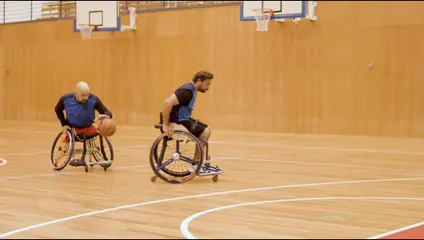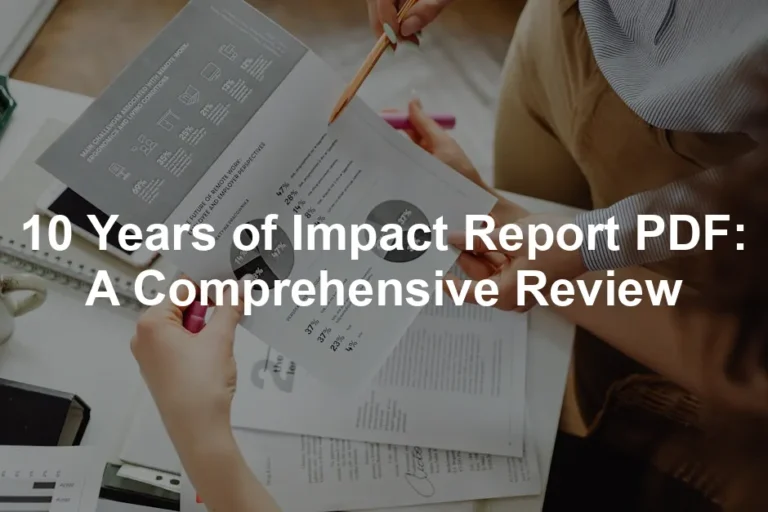Introduction
Predictive analytics in sports is like having a crystal ball that actually works. It uses data to forecast outcomes, helping teams make smarter decisions. For the Croatia men’s national basketball team, this is crucial as they gear up for the 2024 season. Imagine being able to predict player performances, game outcomes, and even injury risks. Sounds magical, right? Well, it’s just data science at play!
In recent years, the basketball landscape has shifted dramatically. Teams no longer rely solely on gut feelings or hunches. Instead, they analyze metrics that help refine strategies and enhance player performance. The Croatian team, with its rich history in basketball, is eager to embrace this analytical approach. After all, they want to not just participate in tournaments but to dominate them.
Now, let’s sprinkle in some humor. If predictive analytics were a player, it’d be the one who never misses a shot. In fact, according to recent statistics, teams leveraging analytics win about 60% of their games on average. So, what’s stopping Croatia from riding this data wave? With key players like Mario Hezonja and Ivica Zubac, they have the talent. All that’s left is to harness the power of analytics for a winning edge.
Speaking of winning edges, if you’re looking to up your game, check out the Nike Men’s Air Jordan 1 Retro High OG Sneakers. These shoes are not just stylish; they provide the support you need when making those game-winning shots!
As Croatia prepares for the Olympic Qualifying Tournament, they face a crucial matchup against New Zealand. With a recent victory over Slovenia under their belt, the team is in high spirits. However, they’ll need to keep their eyes on the prize and use data insights to navigate the challenges ahead. Predictive analytics can illuminate trends, highlight player strengths, and even forecast opponents’ strategies. It’s not just about numbers; it’s about crafting a winning strategy.
In conclusion, predictive analytics is a game-changer for the Croatia men’s national basketball team. With the right insights, they can elevate their performance to new heights. As we dive deeper into this topic, get ready to uncover how data-driven decisions could reshape Croatia’s basketball destiny in 2024. Let’s jump into the fascinating world of analytics and see what it has in store for our beloved team!

Summary of Key Points
Predictive analytics is transforming sports, particularly basketball. For the Croatia men’s national basketball team, the upcoming 2024 season holds immense potential for using data-driven insights. Here are the key points to consider:
- Power of Predictive Analytics: Analytics can forecast player performance, game strategies, and injury risks. It’s like having a coach who knows the future!
- Current State of Croatia’s Team: The team has a mix of experienced players and emerging talent. Their recent victory against Slovenia is a testament to their capabilities, but consistency is key.
- Key Players to Watch: Players like Mario Hezonja, Ivica Zubac, and Dario Saric are crucial for Croatia’s success. Their individual stats will greatly influence the team’s overall performance.
- Data Trends and Forecasting: By analyzing trends, coaches can make informed decisions regarding game strategies. Understanding opponents’ strengths and weaknesses will be vital.
- Reshaping Gameplay Strategies: The integration of analytics can lead to innovative tactics. This means Croatia can reinvent their approach to capitalize on their strengths and exploit opponents’ vulnerabilities.
In summary, the Croatia men’s national basketball team is on the brink of a new era, driven by predictive analytics. Readers will learn how these insights can enhance the team’s prospects and reshape their gameplay in the exciting 2024 season. Get ready for a thrilling journey into the world of basketball analytics!

The Evolution of Analytics in Basketball
Basketball has come a long way since the days of simply counting points. The evolution of analytics has transformed the game. Initially, teams used basic stats: points, rebounds, and assists. Fast forward a few decades, and we now have advanced metrics like Player Efficiency Rating (PER) and Effective Field Goal Percentage (eFG%).
The introduction of technology has been a game-changer. Teams now collect data in real-time during games, capturing every dribble, pass, and shot. This wealth of information allows for deeper insights into player performance and team dynamics. For instance, the Golden State Warriors revolutionized the game with their emphasis on three-point shooting. Their success is attributed to a data-driven approach, which emphasizes shot selection and spacing.
Players, too, have benefited from analytics. LeBron James, often hailed as one of the best, uses data to refine his game. He studies opponents’ tendencies and adjusts his strategies accordingly. Analytics is not just for coaches anymore; it’s a tool for players to maximize their potential.
If you want to dive deeper into the strategies behind the game, grab a copy of Basketball Analytics: A Guide to the New Science of the Game. This book will give you insights on how data is changing the way the game is played!

Case Studies of Successful Analytics Implementation
Several national teams have harnessed predictive analytics successfully. The Australian Boomers, for instance, utilized data to enhance their training methods. By analyzing player workloads and game performance, they improved their injury prevention strategies. This focus on analytics helped them secure a bronze medal in the 2021 Tokyo Olympics.
Another notable example is the Spanish national team. They’ve embraced analytics to craft game strategies that exploit opponents’ weaknesses. By analyzing past performances, they’ve developed tailored game plans that have been instrumental in their success. Their ability to adapt using data has made them a formidable force in international basketball.
These examples highlight the transformative power of predictive analytics. It’s not just about numbers; it’s about leveraging insights to gain a competitive edge. As Croatia prepares for the 2024 season, they’ll need to embrace this analytical revolution to elevate their performance on the world stage.
For those interested in coaching, consider picking up The Basketball Coach’s Playbook. It’s filled with strategies that can help any coach take their game to the next level!

Coaching and Tactical Approach
Josip Sesar, the Croatian men’s national basketball team head coach, has a unique style. He combines traditional coaching methods with modern analytics. This blend allows him to make informed decisions based on data insights. Sesar emphasizes player development and teamwork, fostering chemistry on and off the court.
Under his guidance, the Croatian team has adopted a more analytical approach. Sesar utilizes performance metrics to assess player contributions. This helps identify strengths and weaknesses, enabling tailored training regimens. Players are encouraged to embrace analytics. This not only enhances their individual skills but also improves team dynamics.
The current tactics employed by Croatia focus on ball movement and spacing. Sesar’s strategy aims to maximize offensive potential while maintaining defensive integrity. By using analytics, Sesar can pinpoint optimal shot selection and defensive matchups. This data-driven approach allows for quick adjustments during games. For instance, if a player consistently struggles with shooting, they can adjust their position or shot technique based on statistics.
Analytics can further enhance these strategies by providing real-time feedback. Coaches can analyze data during games to make immediate tactical changes. This ensures Croatia remains competitive, especially against tough opponents. By refining their game plan based on analytics, Croatia can stay ahead of the curve in international basketball.
If you’re interested in enhancing your basketball skills, consider getting the Basketball Shooting: A Guide to the Fundamentals. This book is a must-have for any aspiring shooter!

Predictive Models for Performance Analysis
Key Metrics and Data Points
In basketball, specific metrics are crucial for evaluating performance. Key metrics include shooting efficiency, rebounding rates, and turnover ratios. Shooting efficiency measures how well a player converts shots into points. It provides insights into their scoring ability and shot selection. Rebounding rates gauge a team’s effectiveness in securing possession after missed shots. High rebounding rates indicate dominance on the boards, essential for controlling the game.
Turnovers, on the other hand, reflect a team’s ball security. Excessive turnovers can lead to lost scoring opportunities and give opponents an advantage. Tracking these metrics helps coaches understand player performance and overall team dynamics.
Technology plays a significant role in measuring these metrics. Advanced tracking systems, like player tracking cameras, capture every movement on the court. These systems provide detailed statistics and analytics on players’ actions. Coaches can access real-time data during games, allowing them to make informed decisions. For example, they can identify a player’s shooting zones and adjust defensive strategies accordingly.
Moreover, wearable technology can monitor players’ physical conditions. Devices track heart rates, fatigue levels, and movement patterns. This data helps optimize training loads and manage players’ health. By integrating these technologies, the Croatian team can enhance their performance analysis.
Speaking of performance analysis, the The Basketball Encyclopedia: A Comprehensive History of the Game is a great resource for understanding the fundamentals and evolution of basketball.

Building Predictive Models
Building predictive models begins with historical data analysis. Coaches and analysts collect past game statistics to identify patterns. This data is essential for understanding team performance and predicting future outcomes. Key variables such as points scored, shooting percentages, and defensive metrics are analyzed.
Machine learning algorithms play a pivotal role in this process. These algorithms process vast amounts of data to uncover trends and correlations. For instance, a model might reveal that higher shooting efficiency correlates with winning games. By leveraging these insights, coaches can make strategic adjustments.
The significance of predictive models lies in their ability to forecast player and team performance. They help identify which players excel under specific conditions. This information can guide lineups and game strategies. If a player performs better against certain defensive styles, the coach can tailor their game plan accordingly.
Moreover, predictive models can analyze opponents’ strategies. By evaluating their past performances, Croatia can anticipate opponents’ tactics. This foresight allows for better preparation and in-game adjustments. As Croatia prepares for high-stakes matches, these models will be invaluable in maximizing their chances of success.
For a deeper dive into how data impacts basketball strategies, check out The Science of Basketball: How Data Analytics is Changing the Game. This book explores the impact of data on modern basketball.

Real-Time Data Analysis
Real-time data is revolutionizing basketball strategies, especially during games. Coaches can now make immediate tactical adjustments based on live statistics. Imagine a coach yelling, “Hey, did you see that last play? Let’s tweak our defense right now!” This is the power of real-time analytics.
For instance, let’s look at the Golden State Warriors. They often use real-time data to adjust their shooting strategies mid-game. If they notice an opponent struggling to defend against three-pointers, they quickly shift their focus to take more shots from beyond the arc. This adaptability can be the difference between a win and a loss.
Another great example is the Houston Rockets. They utilize player tracking technology to analyze movement patterns. If a player is consistently getting open looks, the coaching staff can adjust the playbook on the fly, ensuring they exploit that opportunity. This method not only enhances scoring chances but also keeps opponents guessing.
The Croatia men’s national basketball team can learn a lot from these examples. By embracing real-time data, they can make smarter decisions on the court and potentially secure victories in the upcoming tournaments. Imagine them analyzing player fatigue or shooting efficiency during a game against New Zealand. A timely substitution or a strategic play could shift the momentum in their favor.
If you want to ensure your game is top-notch, consider getting a Wilson Evolution Game Basketball. It’s the perfect ball for practice and gameplay!

The Future of Croatia’s Basketball Performance
Predictions for 2024
As we look ahead to 2024, predictive analytics will play a pivotal role in forecasting Croatia’s performance in various tournaments. By leveraging historical data, the team can anticipate outcomes against strong opponents like Slovenia or Greece. For example, if past data shows Croatia struggles against teams with aggressive defenses, they might adjust their offensive strategies accordingly.
Predictive models can analyze matchups based on player statistics, historical performance, and even current form. If Croatia faces off against New Zealand, these models can help identify which players might perform best under specific conditions. Will Mario Hezonja shine against a slower defense? Will Ivica Zubac dominate the boards? These insights can guide coaching decisions and lineup choices.
Moreover, predictive analytics can influence game strategies. If data suggests that Croatia excels in fast-paced games, they can prioritize tempo against teams that prefer a slower style. This adaptability is crucial in high-stakes tournaments where every point counts.

Long-term Strategic Planning
Implementing predictive analytics isn’t just a short-term gain; it can significantly impact Croatia’s long-term success. By establishing a data-driven culture, the team can enhance its strategic planning. This means that every decision—from player recruitment to training methods—can be informed by analytics.
Integrating analytics into youth training programs can also be a game-changer. Imagine young players being taught to understand their shooting percentages or defensive metrics from an early age. This foundation will help cultivate a new generation of basketball talent equipped with the skills necessary to compete at high levels.
Furthermore, continuous analysis of player performance can guide development efforts. If a young player shows promise in rebounding but struggles with shooting, targeted training can address these weaknesses. This tailored approach ensures that the team not only nurtures talent but also maximizes players’ potential.
To understand more about team dynamics, check out The Complete Guide to Basketball Offenses. It’s a great resource for coaches and players alike!

Challenges and Considerations
Adopting predictive analytics isn’t all slam dunks and alley-oops; it comes with its fair share of challenges! One of the biggest hurdles is resistance to change. Imagine trying to convince a seasoned coach that data can outsmart their gut feeling. Spoiler alert: they might not budge easily. Many in the sports world cling to traditional methods, thinking analytics is just a fancy buzzword.
Then there’s the issue of data management. Collecting data is one thing, but managing it effectively is another ballgame. Teams need to ensure they have the right infrastructure to handle vast amounts of information. If the data isn’t organized or accessible, all those insights become useless—like a player who can’t shoot free throws.
Ethical considerations also loom large in the world of sports analytics. With great data comes great responsibility! Teams must use data fairly and transparently. For instance, how they handle player data and privacy can raise ethical questions. Are they tracking players’ biometrics without consent? Are analytics being used to pressure athletes? These are crucial questions that teams must answer to maintain trust and integrity.
As Croatia’s men’s national basketball team gears up for 2024, overcoming these challenges is vital. They need to embrace predictive analytics not just as a tool, but as a philosophy that respects players and enhances performance. Only then can they truly unleash their potential on the court!

Conclusion
As we wrap up this exploration of predictive analytics for the Croatia men’s national basketball team, one thing is clear: embracing this data-driven approach could be the key to success in 2024. Predictive analytics offers a treasure trove of insights, from forecasting player performance to crafting winning strategies.
Let’s take a moment to reflect on the transformative potential of these analytics. Picture this: Croatia, once a team known for its raw talent, now armed with data-driven strategies. By analyzing historical performance, they can make informed decisions that could lead to major victories. Imagine the thrill of watching Mario Hezonja sink a three-pointer because analytics showed the opponent’s defensive weaknesses!
But it’s not just about numbers and statistics. Predictive analytics can help foster better teamwork and communication. When players understand their roles based on data insights, they can work together more effectively. It’s like having a well-oiled machine, where everyone knows their part and contributes to the team’s success.
As the Croatian team prepares for the Olympic Qualifying Tournament, the excitement is palpable. With key players like Ivica Zubac and Dario Saric leading the charge, the potential for greatness is within reach. They’ve already shown resilience with their recent victory over Slovenia, and now they must carry that momentum forward.
So what’s the takeaway? The analytics revolution isn’t just a passing trend; it’s reshaping the landscape of sports. By harnessing the power of data, Croatia can elevate their game and perhaps even claim a spot on the podium in Paris. As fans, we should embrace this shift and cheer on our team as they navigate the path toward success. The future looks bright, and the thrill of basketball is about to get even more electrifying!

FAQs
What is predictive analytics in sports?
Predictive analytics in sports involves using data to forecast outcomes. By analyzing historical performance and player statistics, teams can make informed decisions. It helps in game strategy, player performance evaluation, and injury risk management.
How can analytics improve team performance?
Analytics can improve team performance in specific ways. It aids in developing strategies tailored to opponents’ weaknesses. Coaches can analyze player performance and adjust tactics accordingly. Additionally, game preparation becomes more effective, as teams can anticipate opponents’ moves.
Who are the key players for Croatia in 2024?
Key players for Croatia in 2024 include Mario Hezonja, Ivica Zubac, and Dario Saric. Their unique skills and experience will be pivotal in driving the team’s success during major tournaments.
How does Croatia’s basketball history impact its future?
Croatia’s basketball history is rich and influential. Past successes, like their strong performance in the 1990s, set high expectations. The lessons learned from previous tournaments will guide future strategies and player development, shaping their approach as they aim for success in 2024.
For more insights on how predictive analytics can impact sports, check out our article on predictive analytics.
Please let us know what you think about our content by leaving a comment down below!
Thank you for reading till here 🙂
All images from Pexels




